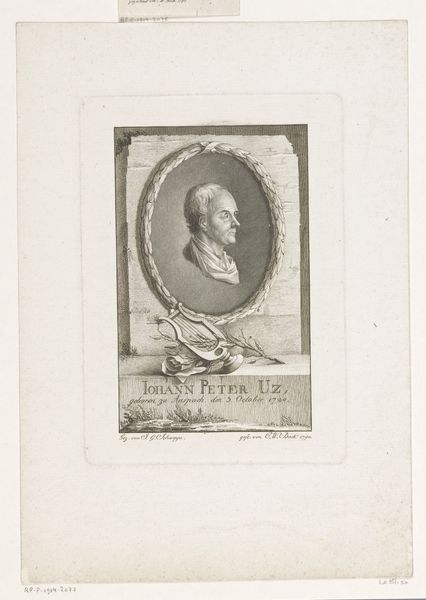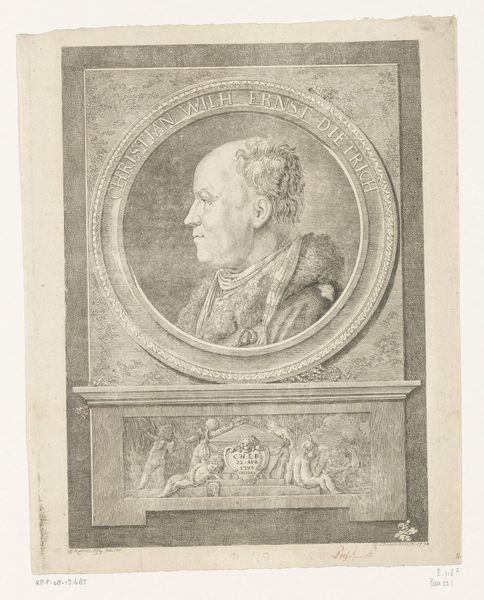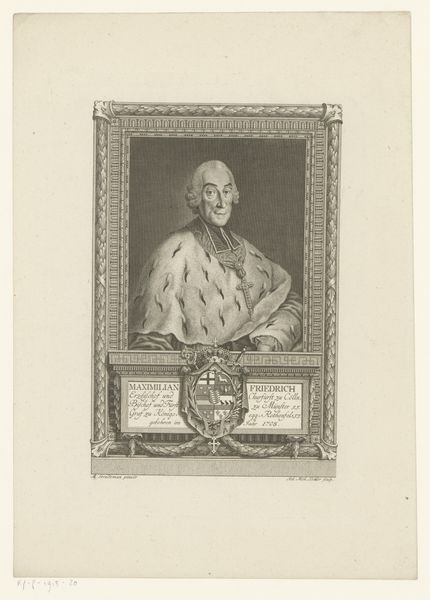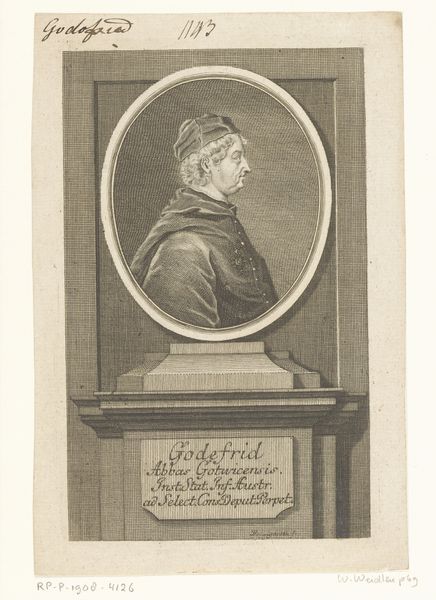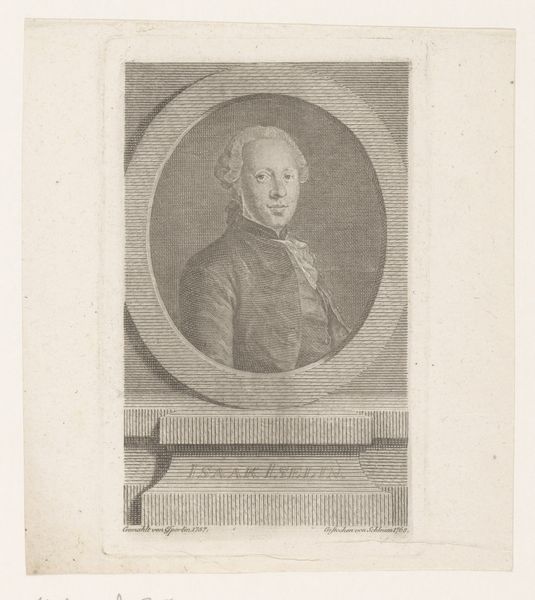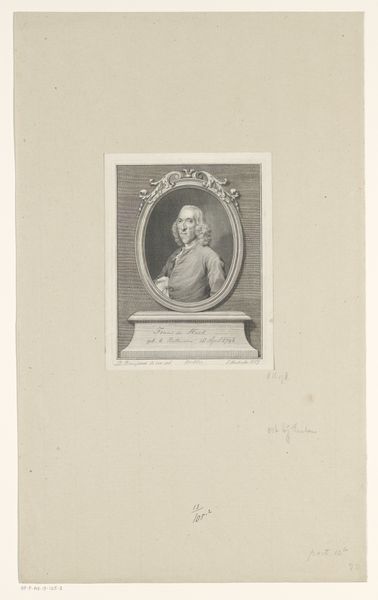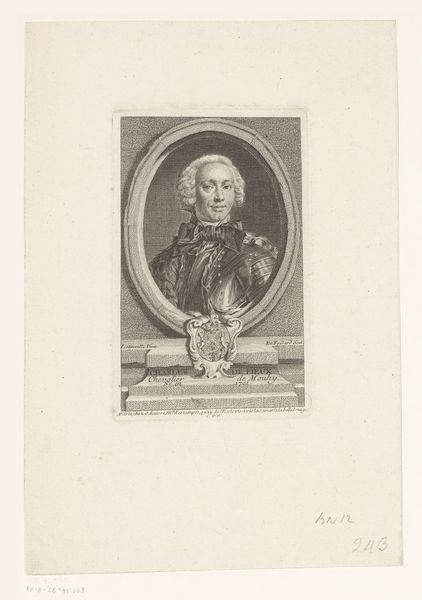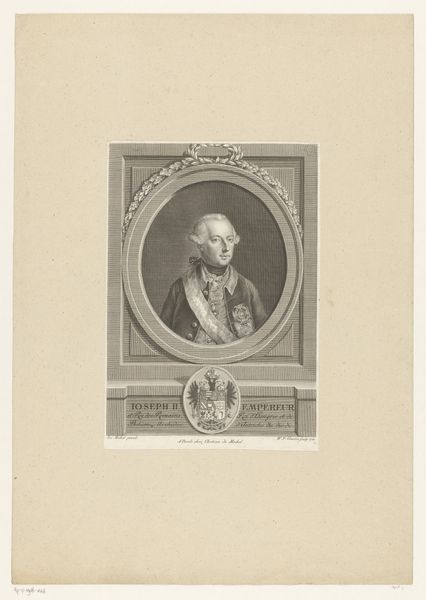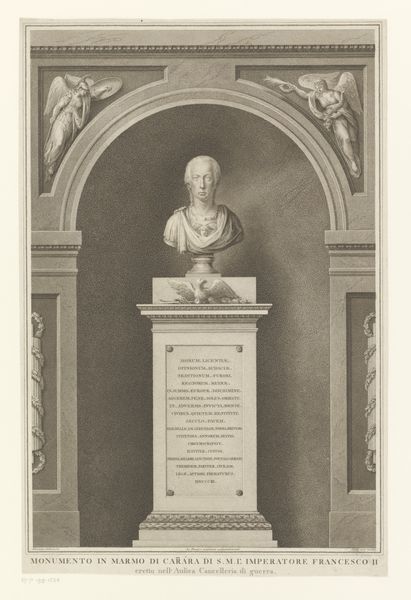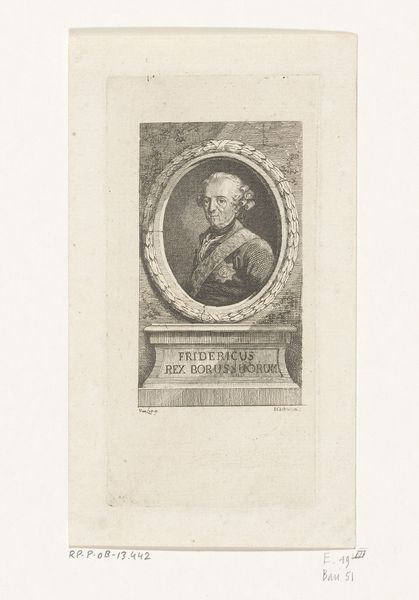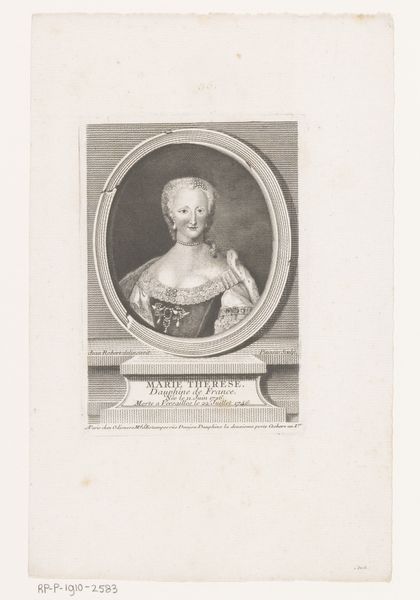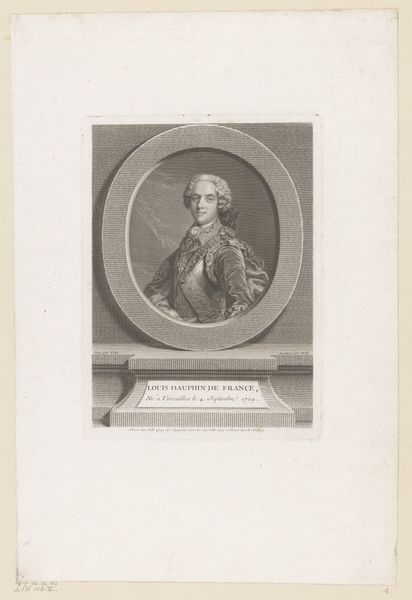
drawing, print, etching, sculpture, engraving
#
portrait
#
drawing
#
neoclacissism
# print
#
etching
#
etching
#
sculpture
#
engraving
Dimensions: height 160 mm, width 100 mm
Copyright: Rijks Museum: Open Domain
Curator: Looking at this piece, what immediately strikes you? Editor: There's a stillness, almost severity, about it. It's the greyscale, perhaps, combined with that very classical composition – the bust on a plinth gives it a sense of permanence, but also... distance. Curator: Indeed. This engraving, dating between 1768 and 1817, portrays a bust of Johann Heinrich Heidegger. The piece is held in the collection of the Rijksmuseum, and credits Johann Heinrich Lips as the artist. Heidegger was a Swiss theologian and professor, a figure deeply involved in the theological debates of his time. Editor: The laurel wreath base seems almost ironic given the plain face. Is the classical reference perhaps more about power, legacy, and less about the kind of 'heroic' ideal one associates with laurel wreaths? Curator: It’s definitely hinting at those visual languages. He is presented as a figure of authority, styled in a neoclassical mode that consciously aligns him with the traditions of Roman statesmen and philosophers. This calculated representation speaks to the ways in which portraiture can actively construct and disseminate particular narratives about the sitter. It is important to note that Lips places Heidegger at a moment where ideas were challenging conventional understanding of identity, and civic values. Editor: I notice the fabric draped over his shoulder – a direct reference to the toga, no doubt? Again, a signifier employed to associate Heidegger with the weight and substance of Roman virtue and republican ideals? What I am wondering is how Heidegger employed or thought of his own identity at this crucial time. Curator: Exactly. This neoclassical approach wasn’t merely aesthetic; it was a declaration of Heidegger's perceived intellectual and social standing in an age of upheaval and questioning of previous values. He stands at the center of reform, styled by Roman values. The piece highlights tensions inherent to how individual identity intersects with societal change. Editor: It's fascinating to see how historical and philosophical context enriches our understanding of visual symbols. Curator: Absolutely, understanding the visual lexicon opens us up to new understandings of history. Thank you for sharing your reflections!
Comments
No comments
Be the first to comment and join the conversation on the ultimate creative platform.
